General Content
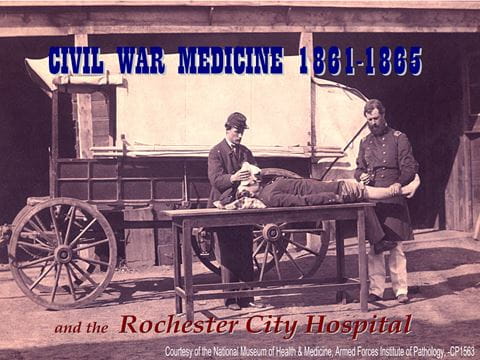
The American Civil War is considered one of the most defining periods in American history. The war touched the lives of every American and influenced the early history of the Rochester City Hospital. The magnitude of combat casualties prompted the creation of the Army Medical Corps. The efficient organization of hospitals coupled with medical advancements such as camp sanitation, improved methods of transportation, and hospital design helped to decrease mortality rates and left a lasting effect on medical science for decades. Additionally, the Civil War became the training ground for many surgeons who would later become respected members of Rochester City Hospital’s medical staff.
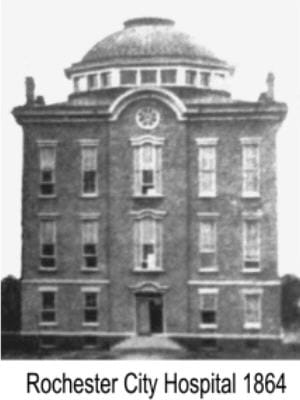 Rochester City Hospital opened in February 1864 and from the beginning admitted furloughed soldiers as patients. Although only St. Mary’s Hospital was designated as a U.S. Army General Hospital, both St. Mary’s and Rochester City Hospital treated local wounded union soldiers. Federal funding of $5.50 per week compensated the hospitals for treating wounded soldiers and in 1865, this revenue accounted for seventy-five percent of the City Hospital’s income.1
Rochester City Hospital opened in February 1864 and from the beginning admitted furloughed soldiers as patients. Although only St. Mary’s Hospital was designated as a U.S. Army General Hospital, both St. Mary’s and Rochester City Hospital treated local wounded union soldiers. Federal funding of $5.50 per week compensated the hospitals for treating wounded soldiers and in 1865, this revenue accounted for seventy-five percent of the City Hospital’s income.1
By the end of the war, the U.S. Army had developed a well-organized medical corps comprising a system of levels of treatment starting at Regimental Dressing Stations where minor wounds were treated and triage was performed before transfer to Division hospitals. Depending on the severity of the wounds, patients were transferred to Division and Corps Hospitals for surgery or treatment for disease. Casualties requiring extended treatment were evacuated to theater based Army Depot Evacuation Hospitals or to larger Army General Hospitals. To make room for new casualties, many patients were furloughed back to their homes for recuperation or prolonged treatment in civilian General hospitals such as St. Mary’s and the Rochester City hospital. The great majority of Civil War deaths were the result of disease rather than combat wounds.
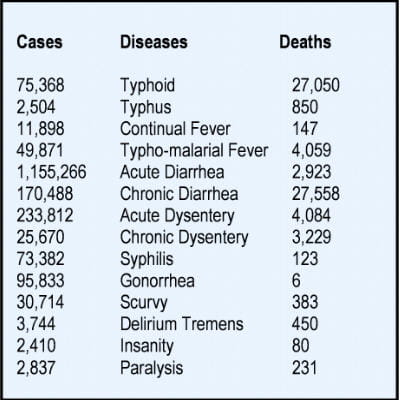 Threat from Disease
Threat from DiseaseIn the Civil War, Army surgeons treated a wide spectrum of illness as well as performed advanced surgical procedures. Of the 618,000 reported deaths from both the Federal and Confederate forces during the four years of war, 414,000 were the result of disease. Poor diet, lack of proper clothing, and equipment, and unsanitary conditions contributed greatly to the deaths from disease. Acute and chronic dysentery were referred to as fluxes and eruptive fevers were the diseases of small pox, measles and scarlet fever. Gangrene is not mentioned in the official records because at the time it was not considered a disease but the result of an operation. It is now known that gangrene is a result of a unique organism and qualifies as a disease.
Surgeons attempted to treat these conditions with a variety of compounds and treatments. Usually the most effective medicine was a good diet and the body’s natural restorative ability. The medical thought of the time believed that the blood carried disease and by purging the “ill-humors” in the blood, health could be restored. It would not be until the Second World War and the advent of antibiotics (primarily penicillin) that a real understanding and effective treatment of disease would be realized.
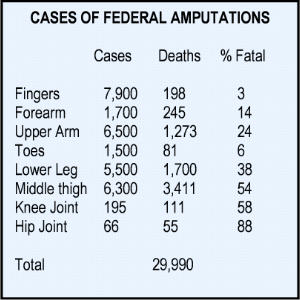 Battlefield Surgery
Battlefield SurgeryThe most common surgical procedure performed by Army surgeons was amputation. The advancement of military weaponry far outpaced the advancement of medicine. The development and use of the .58 caliber Minié Ball bullet and the relatively low muzzle velocity of the percussion musket all but guaranteed the shattering of bones that left no alternative treatment but amputation. Although ether was used at times, chloroform was the most common form of anesthetic. A typical army surgical team would consist of one surgeon to perform the operation, two assistant surgeons to hold the patient on both sides and one assistant surgeon or medical assistant to hold the limb to be removed. It is estimated that after a major battle, each team would perform an amputation every 15 minutes and often, surgeons would remain on their feet engaged in surgeries for up to 48 hours at one stretch.
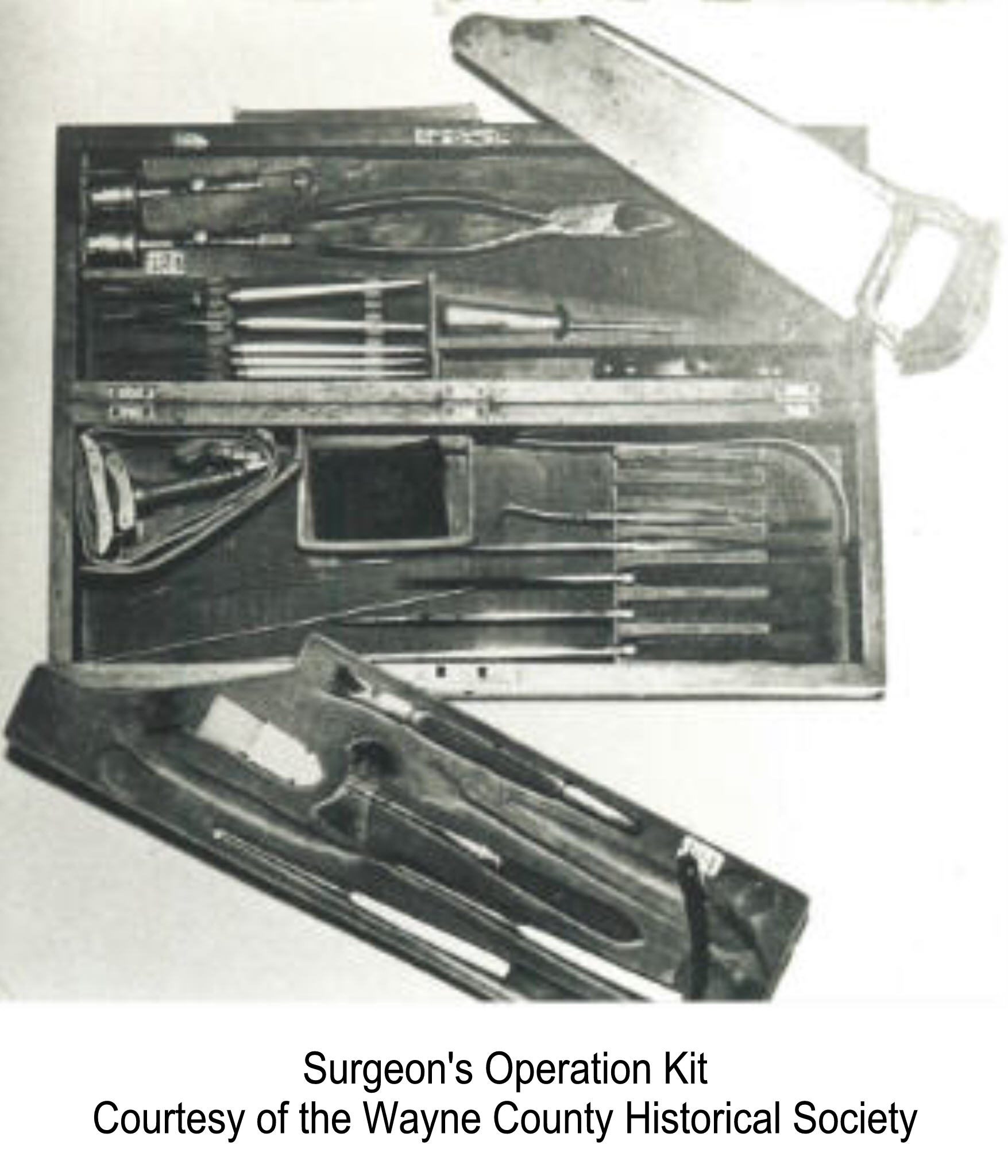
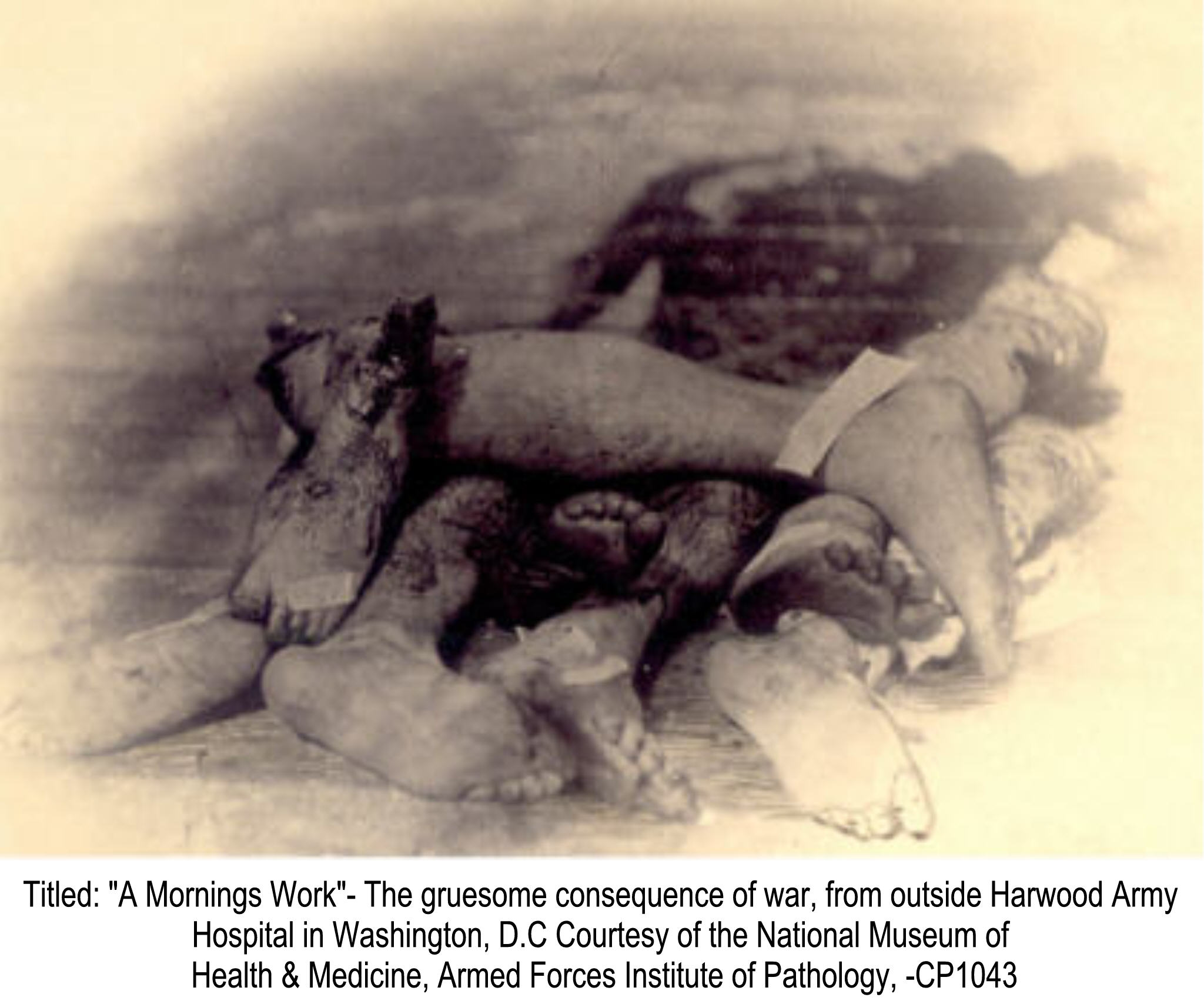
Service in the Army offered a unique opportunity for physicians to gain practical and clinical experience without the challenges associated with private practice. Several early members of the City Hospital’s medical staff served as Army surgeons and would later have significant influence on the hospital success and growth.
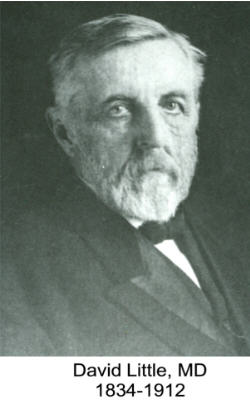 Doctor David Little began his medical practice in Rochester in 1859. Weeks after the guns of Fort Sumter sparked the beginning of the war, Little was mustered into the Army with the 13th N.Y. Volunteer Infantry in May 1861. He served for the next two years before being discharged in May 1863. Dr. Little returned to Rochester to resume his medical practice and was appointed as a visiting Physician to the staff of the City Hospital in October 1866. He later served as President of the Medical Staff from 1886 until 1898.
Doctor David Little began his medical practice in Rochester in 1859. Weeks after the guns of Fort Sumter sparked the beginning of the war, Little was mustered into the Army with the 13th N.Y. Volunteer Infantry in May 1861. He served for the next two years before being discharged in May 1863. Dr. Little returned to Rochester to resume his medical practice and was appointed as a visiting Physician to the staff of the City Hospital in October 1866. He later served as President of the Medical Staff from 1886 until 1898.
 Immediately after his graduation from the Albany Medical College, Dr. Enoch Vine Stoddard enlisted as the Assistant Surgeon in the 65th N.Y. Volunteer Infantry in June of 1863. He served with the regiment at the battle of Gettysburg and through General Grant’s Virginia Campaign. After his discharge in September 1864, He returned home to resume his medical practice and later moved to Rochester in 1871. Dr. Stoddard was elected later that year as an attending physician at the Rochester City Hospital and served as Secretary of the Medical Staff from 1872 until 1898. In association with Doctors Whitbeck and Ely, Stoddard was responsible for the funding and construction of the Doctor’s Pavilion for Contagious Diseases at the hospital. One of his later distinctions was as founder of the Society for the Prevention of Cruelty to Animals.
Immediately after his graduation from the Albany Medical College, Dr. Enoch Vine Stoddard enlisted as the Assistant Surgeon in the 65th N.Y. Volunteer Infantry in June of 1863. He served with the regiment at the battle of Gettysburg and through General Grant’s Virginia Campaign. After his discharge in September 1864, He returned home to resume his medical practice and later moved to Rochester in 1871. Dr. Stoddard was elected later that year as an attending physician at the Rochester City Hospital and served as Secretary of the Medical Staff from 1872 until 1898. In association with Doctors Whitbeck and Ely, Stoddard was responsible for the funding and construction of the Doctor’s Pavilion for Contagious Diseases at the hospital. One of his later distinctions was as founder of the Society for the Prevention of Cruelty to Animals.
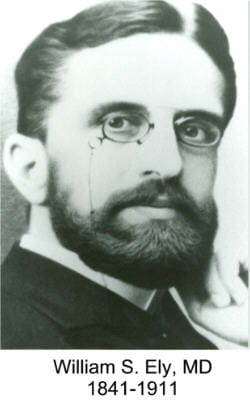 Dr. William S. Ely was a second generation physician at the Rochester City Hospital. His father, William W. Ely, MD, was an early leader at Rochester City Hospital. After graduating from the University of Rochester in 1857, William S. Ely began the study of medicine in his father’s office. In August 1862 he enlisted in the 108th N.Y. Volunteer Infantry receiving his commission the following month as a regiment’s Assistant Surgeon. He was later transferred to Annapolis, Maryland where he served as an Army hospital administrator for the remainder of the war.
Dr. William S. Ely was a second generation physician at the Rochester City Hospital. His father, William W. Ely, MD, was an early leader at Rochester City Hospital. After graduating from the University of Rochester in 1857, William S. Ely began the study of medicine in his father’s office. In August 1862 he enlisted in the 108th N.Y. Volunteer Infantry receiving his commission the following month as a regiment’s Assistant Surgeon. He was later transferred to Annapolis, Maryland where he served as an Army hospital administrator for the remainder of the war.
After three years of service, he was discharged in October 1865. Returning to civilian life, Dr. Ely enrolled in the College of Physicians and Surgeons in New York City, eventually graduating two years later. He received an appointment to the medical staff of the City Hospital in 1868 and for the next forty years his work at the city hospital would be instrumental in establishing the first School of Nursing, the Out-patient Department, and the Magne-Jewell memorial building. His career at the hospital and in the community also encompassed service as a private and ward physician and advisor to the managing Boards, hospital officers, colleagues, and as the first Vice-President of the Board of trustees of the University of Rochester.
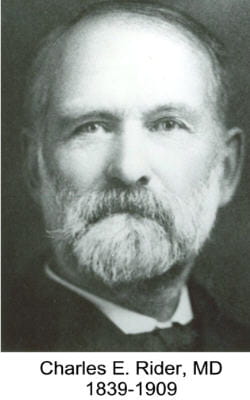 Another member of the City Hospital’s staff to serve in the Civil War was Doctor Charles E. Rider. He received his medical degree from the University of Vermont in 1863 and a year later relocated to Rochester to establish his medical practice. Dr. Rider accepted the position as the City Hospital’s first Resident Physician in 1864 and later that year received appointed as Assistant Surgeon of the 54th Regiment of the N.Y. National Guard. The unit was activated for 90 days in July 1864 serving as prison guards in Elmira, N.Y. Returning to the City Hospital in November, Dr. Rider later developed the hospital’s first specialty clinic, the Department of Eye and Ear Disease. His work with the hospital laid the foundation for the hospital’s Out-Patient department where free medical treatment was dispensed. Dr. Rider remained active with the hospital until his death in 1909.
Another member of the City Hospital’s staff to serve in the Civil War was Doctor Charles E. Rider. He received his medical degree from the University of Vermont in 1863 and a year later relocated to Rochester to establish his medical practice. Dr. Rider accepted the position as the City Hospital’s first Resident Physician in 1864 and later that year received appointed as Assistant Surgeon of the 54th Regiment of the N.Y. National Guard. The unit was activated for 90 days in July 1864 serving as prison guards in Elmira, N.Y. Returning to the City Hospital in November, Dr. Rider later developed the hospital’s first specialty clinic, the Department of Eye and Ear Disease. His work with the hospital laid the foundation for the hospital’s Out-Patient department where free medical treatment was dispensed. Dr. Rider remained active with the hospital until his death in 1909.
The American Civil War influenced the advancement of medical science by the shear magnitude of battle casualties. The lessons learned by the battle tested physicians and hospital administrators would later play a major part in the success and development of the early Rochester City Hospital.
Notes:
1. Teresa K. Lehr and Philip G. Maples, To Serve the Community: A Celebration of Rochester General Hospital 1847-1997 (Virginia Beach: Donning Publishing, 1997), 25-26
Credits: Text, and Layout:
Research:
Special Thanks to:
Sources: